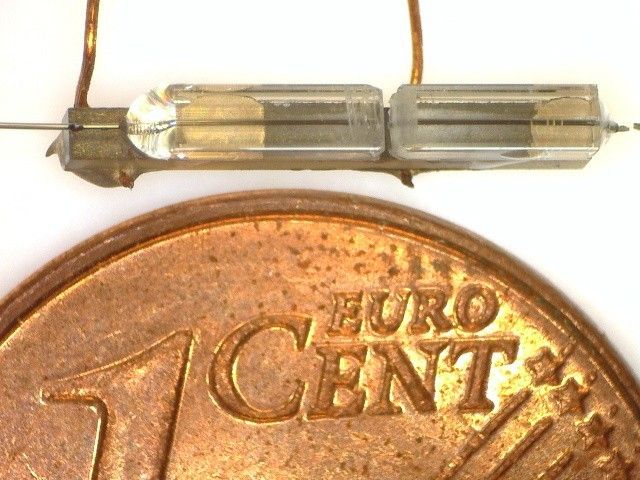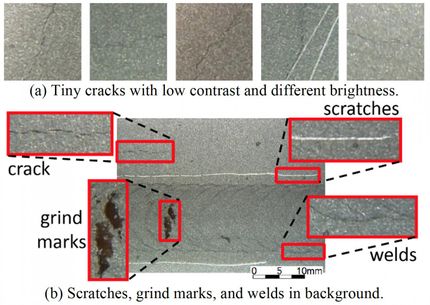Carbon nanotubes improve metal's longevity under radiation
One of the main reasons for limiting the operating lifetimes of nuclear reactors is that metals exposed to the strong radiation environment near the reactor core become porous and brittle, which can lead to cracking and failure. Now, a team of researchers at MIT and elsewhere has found that, at least in some reactors, adding a tiny quantity of carbon nanotubes to the metal can dramatically slow this breakdown process.
For now, the method has only proved effective for aluminum, which limits its applications to the lower-temperature environments found in research reactors. But the team says the method may also be usable in the higher-temperature alloys used in commercial reactors.
The findings are described by MIT Professor Ju Li, postdocs Kang Pyo So and Mingda Li, research scientist Akihiro Kushima, and 10 others at MIT, Texas A&M University, and universities in South Korea, Chile, and Argentina.
Aluminum is currently used in not only research reactor components but also nuclear batteries and spacecraft, and it has been proposed as material for storage containers for nuclear waste. So, improving its operating lifetime could have significant benefits, says Ju Li, who is the Battelle Energy Alliance Professor of Nuclear Science and Engineering and a professor of materials science and engineering.
Long-term stability
The metal with carbon nanotubes uniformly dispersed inside "is designed to mitigate radiation damage" for long periods without degrading, says Kang Pyo So.
Helium from radiation transmutation takes up residence inside metals and causes the material to become riddled with tiny bubbles along grain boundaries and progressively more brittle, the researchers explain. The nanotubes, despite only making up a small fraction of the volume -- less than 2 percent -- can form a percolating, one-dimensional transport network, to provide pathways for the helium to leak back out instead of being trapped within the metal, where it could continue to do damage.
Testing showed that after exposure to radiation, the carbon nanotubes within the metal can be chemically altered to carbides, but they still retain their slender shape, "almost like insects trapped in amber," Ju Li says. "It's quite amazing -- you don't see a blob; they retain their morphology. It's still one-dimensional." The huge total interfacial area of these 1-D nanostructures provides a way for radiation-induced point defects to recombine in the metal, alleviating a process that also leads to embrittlement. The researchers showed that the 1-D structure was able to survive up to 70 DPA of radiation damage. (DPA is a unit that refers to how many times, on average, every atom in the crystal lattice is knocked out of its site by radiation, so 70 DPA means a lot of radiation damage.)
After radiation exposure, Ju Li says, "we see pores in the control sample, but no pores" in the new material, "and mechanical data shows it has much less embrittlement." For a given amount of exposure to radiation, the tests have shown the amount of embrittlement is reduced about five to tenfold.
The new material needs only tiny quantities of carbon nanotubes (CNTs) -- about 1 percent by weight added to the metal -- and these are inexpensive to produce and process, the team says. The composite can be manufactured at low cost by common industrial methods and is already being produced by the ton by manufacturers in Korea, for the automotive industry.
Strength and resilience
Even before exposure to radiation, the addition of this small amount of nanotubes improves the strength of the material by 50 percent and also improves its tensile ductility -- its ability to deform without breaking -- the team says.
"This is a proof of principle," says Kang Pyo So. While the material used for testing was aluminum, the team plans to run similar tests with zirconium, a metal widely used for high-temperature reactor applications such as the cladding of nuclear fuel pellets. "We think this is a generic property of metal-CNT systems," he says.
"This is a development of considerable significance for nuclear materials science, where composites -- particularly oxide dispersion-strengthened steels -- have long been considered promising candidate materials for applications involving high temperature and high irradiation dose," says Sergei Dudarev, a professor of materials science at Oxford University in the U.K., who was not involved in this work.
Dudarev adds that this new composite material "proves remarkably stable under prolonged irradiation, indicating that the material is able to self-recover and partially retain its original properties after exposure to high irradiation dose at room temperature. The fact that the new material can be produced at relatively low cost is also an advantage."
Original publication
Most read news
Original publication
Kang Pyo So, Di Chen, Akihiro Kushima, Mingda Li, Sangtae Kim, Yang Yang, Ziqiang Wang, Jong Gil Park, Young Hee Lee, Rafael I. Gonzalez, Miguel Kiwi, Eduardo M. Bringa, Lin Shao, Ju Lia; "Dispersion of carbon nanotubes in aluminum improves radiation resistance"; Nano Energy; 2016
Organizations
Other news from the department science

Get the chemical industry in your inbox
By submitting this form you agree that LUMITOS AG will send you the newsletter(s) selected above by email. Your data will not be passed on to third parties. Your data will be stored and processed in accordance with our data protection regulations. LUMITOS may contact you by email for the purpose of advertising or market and opinion surveys. You can revoke your consent at any time without giving reasons to LUMITOS AG, Ernst-Augustin-Str. 2, 12489 Berlin, Germany or by e-mail at revoke@lumitos.com with effect for the future. In addition, each email contains a link to unsubscribe from the corresponding newsletter.
Most read news
More news from our other portals
Last viewed contents
Category:Pharmaceutical_companies_of_Norway
Clariant announces sale of Clariant Polymers K.K. to The Nippon Synthetic Chemical Industry Co. Ltd
Lonza Starts 2017 with Outstanding First Quarter - Outlook 2017 upgraded
Discovery sheds light on nuclear reactor fuel behavior during a severe event - New discovery about melted UO2 structure will enhance understanding of reactor safety during meltdown scenario

Old materials in a new design - Researchers present useful ideas for 3D printing

Why your headphone battery doesn't last - Texas Engineers took on the well-known battery challenge of degradation in a real-world technology that many of us use daily: wireless earbuds

A new thermoelectric material for a sustainable society - The first synthesis of bulk CaMgSi with thermoelectric properties

Saperatec GmbH - Bielefeld, Germany
Stratophase receives £2.5m follow-on investment - New funding supports roll out of Early Access Programme for SpectroSens real-time monitoring technology


























































